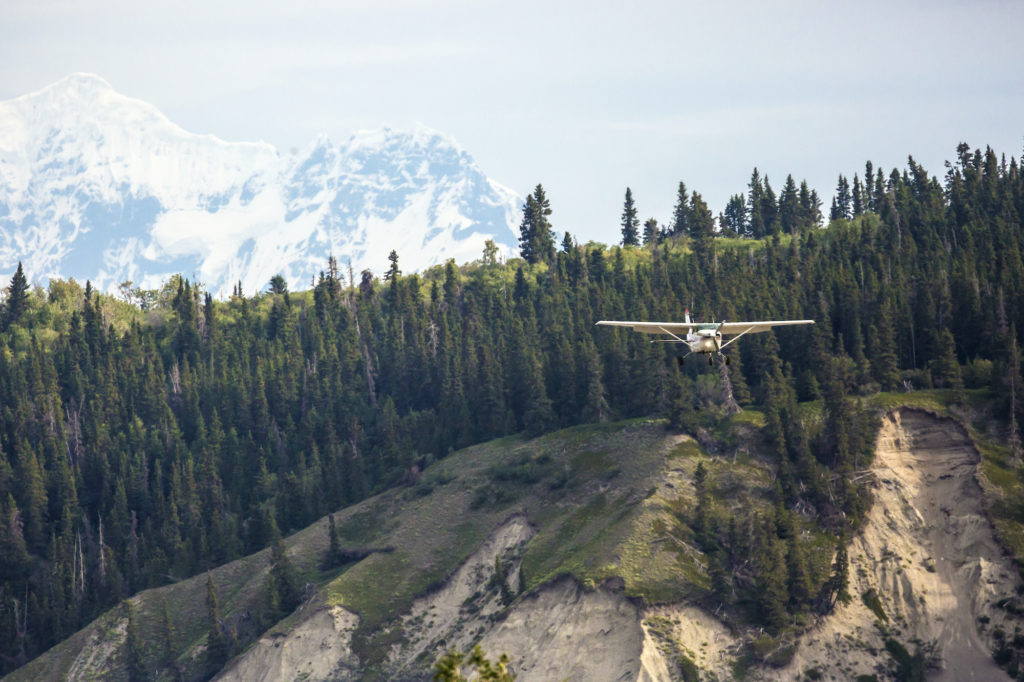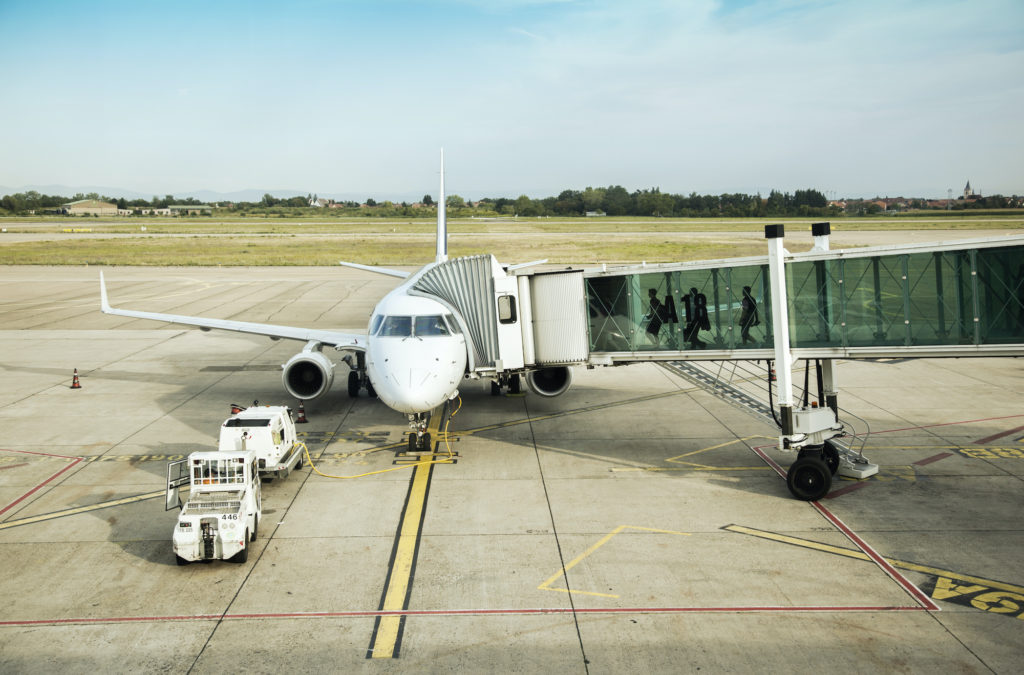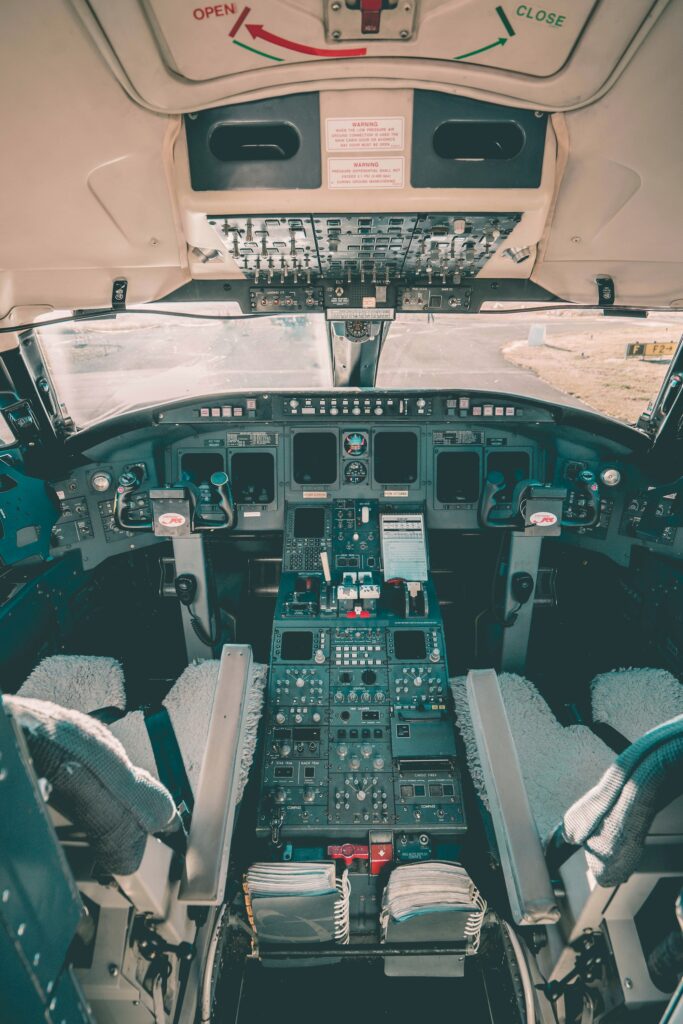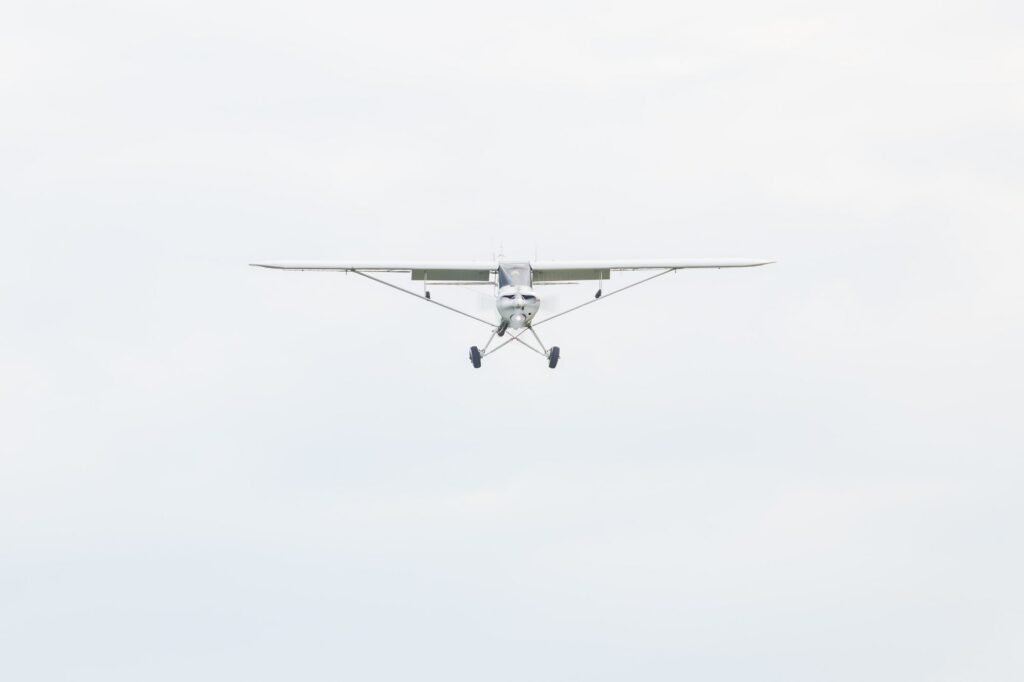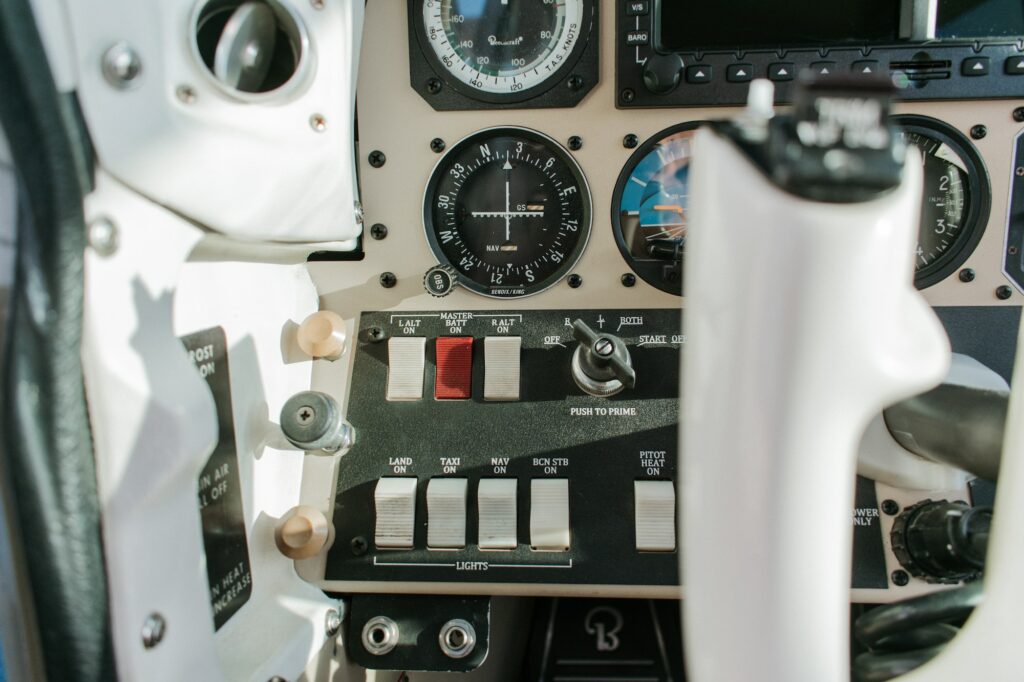
Control Your Operation: A Commercial Pilot’s Regulatory Guide
Control Your Operation: A Commercial Pilot’s Regulatory Guide
Navigating a confusing maze of regulations is critical for Commercial Pilots seeking to stay out of legal trouble. Let’s break it down.
Discussion Topics
- Two Privileges in §61.133
- Charge of the FAA
- Operational Control
- Air Carriers and Commercial Operators
- Private vs. Common Carriage
- Holding Out
- Fractional Ownership
- Part 125
- §119.1(e) Exemptions
- What This Means for New Commercial Pilots
- Definitions
- Title 14 Chapter I Subchapter A Part §1.1
- Title 14 Chapter I Subchapter G Part §110.2
Two Privileges
A commercial pilot certificate allows a pilot two important privileges. Per 14 CFR §61.133, commercial pilots can act as pilot in command (PIC) for compensation or hire, and also while carrying persons or property for compensation or hire. These privileges come with a caveat: the PIC must be qualified under the applicable regulations that govern the type of operation conducted.
Therein lies much confusion about commercial pilot privileges. “Carrying persons or property for compensation or hire” and “acting as PIC for compensation or hire” are two very separate scenarios.
The former is a situation in which both the pilot and aircraft are for hire to do things like transport people, mail, and property. Think of operations like airlines, charter companies, and air cargo. Organizations that do this kind of work are called air carriers or commercial operators and are additionally governed under Title 14 Chapter I Subchapter G, covering Parts 110-139.
The latter is flying someone else’s airplane for hire, assuming that one is not also flying persons or property for hire in the process. This type of operation is not governed under Subchapter G. For example, an individual who owns an aircraft and hires a commercial pilot to fly them around to meetings with clients or on family vacations.
The fundamental challenge in understanding commercial pilot privileges and limitations is determining whether or not an operation involves the carriage of persons or property for hire. This is an area that causes many a commercial pilot applicant to bust a practical test oral exam, and that tricks others into performing actions that they’re legally not authorized to conduct. It’s critical that new Commercial Pilots understand this legally complex topic in detail, and that they recognize the risk of, and avoid partaking in, unsanctioned operations involving the carrying of persons or property for compensation or hire.
Charge of the FAA
The primary duty of the FAA as appointed by Congress is promoting aviation commerce and safety. This is a balancing act between ensuring regulations and policies are in the public interest of preserving life and property, but not so stringent that free enterprise and profitability are no longer possible. To accomplish this duty, not all of the 1399 Parts under Title 14 (the FARs) apply to each and every flight.
Applicability of regulations to a specific type of flight depends on the nature of the flight. Simply put, airline flights on major carriers like United, Southwest, or any affiliated regional 121 carrier are highly regulated. Enjoying the beauty of flight on your own dime with a few close friends is understandably less regulated. Your friends have a choice in whether or not they will hop in an aircraft with you. They have time to judge your character and know you as an individual. The FAA considers this a determining factor over whether or not you will participate, since to an extent you have some control over the nature of the flight. The general public, however, has no say over which pilots they fly with when booking a ticket with an airline. This lack of control regarding the circumstances of your flight plays a big part in something the FAA defines as Operational Control.
Operational Control
Operational Control is the degree to which customers or passengers have control over the operation—whether or not flights dispatch due to weather, fuel loading, destinations, and so on. Generally, the more operational control that customers have, the less regulation is required.
Carrying mail and passengers for hire is heavily regulated since those customers have no operational control. If a passenger does not wish to go they can refuse boarding, but that decision will have zero impact on whether or not the flight departs. If the operation’s employees—namely pilots and dispatchers—deem it safe, the flight will go.
FAA Advisory Circular (AC) 91-37B provides us with the following sample questions to help determine who maintains operational control:
- Who decides to assign crewmembers and aircraft; accept flight requests; and initiate, conduct, and terminate flights?
- For whom do the pilots work as direct employees or agents?
- Who is maintaining the aircraft and where is it maintained?
- Before departure, who ensures the flight, aircraft, and crew comply with regulations?
- Who decides when/where maintenance is accomplished, and who directly pays for the maintenance?
- Who determines weather/fuel requirements, and who directly pays for the fuel?
- Who directly pays for the airport fees, parking/hangar costs, food, service, and/or rental cars?
Now, you would think by completing the questions above it would be possible to determine who ultimately has operational control right? Not quite. Operational Control is a shared responsibility that can be broken up across multiple parties. The FAA has referred to “varying degrees” of operational control. While the PIC always maintains the final authority for a flight operated under their command, multiple parties are liable for the operation of a flight. Consider what happens if a flight violates a law other than an FAR, or results in an accident or incident with damage to property or loss of life. Operational control can be used to determine legally responsible parties, just like you could be held liable if your car was impounded because a friend got a DUI while driving it.
Now that we generally understand the concept of Operational Control, we can explore how it’s applied in Subchapter G Part 119, which governs the certification and operation of air carriers and operators for compensation or hire.
Air Carriers and Commercial Operators
Air carriers and commercial operators are governed under 14 CFR Subchapter G, Part 119. 14 CFR 119 applies to any person operating or intending to operate a civil aircraft as an air carrier, commercial operator or both, in air commerce. This means that if an aircraft operation meets the definition of air commerce, and is transporting persons or property for hire – OR – is transporting mail interstate or overseas in part by air, an air carrier or operating certificate is required.
Air Carrier certificates, are, by definition, issued to individuals and grant those individuals the authority to operate an organization in compliance with the regulations governing the Part of 14 CFR Subchapter G under which the certificate is issued. A list of issued Air Carrier certificates is publicly available from the Department of Transportation.
Holders of air carrier certificates operate primarily under Part 121 which regulates domestic, flag, and supplemental operations of certificated air carriers. This includes most airlines from large majors like United Airlines and Delta Air Lines to regional operators like Endeavor Airlines and Mesa Airlines.
Operators that do not conduct domestic, flag and supplemental operations but instead operate in an on-demand or commuter structure fall under Part 135. Kenmore Air, Mokulele, Surf Air, JSX, and Boutique are examples of larger Part 135 operations. Operations under Part 135 are far more regulated than basic Part 91 flying, but less strict than Part 121.
Consider the customers’ operational control in different air carriers. It’s lowest for those flying on Part 121 operators. A passenger on United Airlines may not even see their pilots before the flight, let alone know anything about them. There is no passenger access to the flight deck during 121 operations. At Kenmore Air in a DHC-2 Beaver on floats, the passengers—all six of them!—are almost certain to see and talk to the pilots, and may even have a seat with access to the controls! It’s very reasonable that, as a result of variance in operational control, United Airlines must be held to a higher regulatory standard than a commuter operation—though both are quite thoroughly regulated under Part 119.
The requirements of Part 121 or Part 135 include flight planning, dispatching, training, testing, and airplane performance requirements. They also include specified minimum requirements to serve as a pilot—Pilot in Command (PIC) or Second in Command (SIC) for either operation. Serving as a pilot in a Part 121 operation requires, among other experience, an Airline Transport Pilot (ATP) certificate, for which pilots are only eligible once they’ve achieved a minimum of experience, including (unless otherwise exempted) 1,500 hours of flight time.
Determining whether or not the operation requires an air carrier certificate can be difficult because the world of commercial aviation is full of ambiguity, shady operations, and low-time pilots eager to build time.
We recommend erring on the side of caution should there be any question about whether or not an operation requires an air carrier certificate.
Private vs. Common Carriage
The next boondoggle we must confront is the distinction between Private and Common Carriage operations. These are common law terms, but they’re not well-defined in 14 CFR. Fortunately, Advisory Circular 120-12A provides more information.
Common Carriage is carriage that involves four criteria: (1) a holding out (more about this term later, but basically advertising services) or a willingness to (2) transport persons or property (3) from place to place (4) for compensation. An air carrier certificate is required to conduct common carriage operations.
Private Carriage is carriage that does not involve holding out and is generally long-term.
Distinguishing between private carriage and common carriage involves much ambiguity. The FAA has determined that pilots with 18-24 contracts to have been holding out and acting as an air carrier, and have meanwhile upheld an operator as conducting private carriage with 3 contracts. That’s a large spread, folks.
AC 120-12A states “persons intending to conduct only private operations in support of other business should look cautiously at any proposal for revenue generating flights which most likely would require certification as an air carrier.”
In other words, exercise caution.
Historically many have argued that, according to AC 120-12A, private carriage does not require an operating certificate. However this is ambiguous. 14 CFR §119.5(c) stipulates:
A person not authorized to conduct direct air carrier operations, but authorized by the Administrator to conduct operations when common carriage is not involved as an operator of any U.S.-registered civil airplane or powered-lift with a seat configuration of 20 or more passengers, or a maximum payload capacity of 6,000 pounds or more, will be issued an Operating Certificate.
In other words, if the aircraft is large enough an operating certificate is still required, even if the operation is not considered common carriage.
When looking at small aircraft we must reference 14 CFR §119.1(a)(3), which stipulates that Part 119 applies to each person operating or intending to operate civil aircraft:
When noncommon carriage [an aircraft operation for compensation or hire that does not involve a holding out to others] is involved, except as provided in § 91.501(b) of this chapter, or in private carriage for compensation or hire, in operations of any U.S.-registered civil airplane or powered-lift with a passenger-seat configuration of less than 20 seats and a payload capacity of less than 6,000 pounds.
Such operations must reference Part 119 and may require air carrier certification if conducting for profit operations.
Economic Authority is another consideration referenced in the preamble of AC 120-12A:
“If the operations are in interstate or foreign commerce, this distinction determines whether or not the operator needs economic authority as an “air carrier” from the Department of Transportation.”
This means that with respect to private and common carriage, the basis of determining whether or not certification may be required is beyond the distinction between two types of carriage. The distinction is also based on the operating region of the operation. Once the operation crosses state lines and goes from intrastate to interstate, the DOT now must weigh in. Subsequently, the DOT issues commuter air carrier authorizations to such operators.
Confused yet?
Holding Out
Holding out is a vague term for a pilot implying a willingness to serve a segment of the general public. Examples of holding out include signs, advertising, operating on behalf of an organization if membership/participation is available to a significant segment of the public, or even just having a reputation to serve all. Holding out is not permitted in common carriage operations unless that operation is certified, as applicable, under Parts 121, 135, or Part 91 Subpart K.
Even expressing a willingness to fly someone on a social media group would be considered holding out.
We’ll circle back on this, but Commercial Pilots can hold out in a variety of circumstances. They may not, however, hold out in operations requiring air carrier certification when they lack such certification.
Fractional Ownership
Fractional ownership organizations appear from the outside to be similar to Part 135 operations, except that customers are partial owners of the aircraft and thus the operation does not engage in common carriage. This type of operation is governed by 14 CFR Part 91 Subpart K, which specifically prohibits fractional owners from carrying persons or property for compensation or hire.
Subpart K organizations use shared ownership, an exchange of dry leases, and a management company to allow customers to functionally purchase part of a fleet, which provides them flexibility.
The largest fractional companies include NetJets and FlexJet. Many large fractional organizations also maintain air carrier certificates for when operations need to be conducted on non-program aircraft.
Part 125
Operators interested in conducting noncommon carriage operations with aircraft having a seating capacity of 20 or more passengers, or a maximum payload capacity of 6,000 pounds or more must be certified under 14 CFR Part 125. Although the operation is not for compensation or hire, the size of the aircraft mandates stricter regulations than those solely required by Part 91.
This part is aimed at regulating operations in large aircraft used for private use, like Boeing Business Jets and luxury 747s, since so much care and consideration is required when operating an aircraft of that size. Part 125 does, however, list exemptions. An operation can be exempt from a certificate if the FAA issues a Letter of Deviation Authority or the aircraft is certificated as Experimental among other avenues. Yes, you read that right. There are, for example, Experimental 737s flying around.
§119.1(e) Exemptions
By now, you may be wondering what exactly a new commercial pilot can do other than flying under an air carrier or operating certificate. The good news is that there are several opportunities for low-time commercial pilots, which are well-defined in 14 CFR §119.1(e).
Below is a simplified summary of the operations listed, but be aware that many include additional stipulations, such as distance from the departure airport and the size of aircraft involved. Performing student instruction, for example, requires a Flight Instructor Certificate. Additionally, a letter of authorization from a FSDO may be required for some operations.
Those bolded in the list below are the most common low-time jobs for new commercial pilots. For specifics refer to 14 CFR §119.1(e).
We’ll also note that you can advertise your willingness to perform these services because they do not involve the transportation (as in, from place to place) of persons or property for hire.
- Student instruction
- Non-stop air tours
- Ferry or training flights
- Aerial work like crop dusting, banner towing, and pipeline patrol
- Sightseeing flights in hot air balloons
- Flying skydivers
- Certain local helicopter flights
- Helicopter operations under Part 33 (External Load Operations)
- Emergency mail service
- Operations under §91.321 (Carriage of Candidates in Elections)
- Small UAS operations under Part 107
Remember that additional stipulations may apply! Non-stop air tours, for example, are limited in distance from the airport and require mandatory DOT drug testing.
What This Means for a New Commercial Pilot
Operationally, all of this means a few things for a new commercial pilot.
- While you can be hired as a pilot under Part 61, you cannot function as an air carrier, or conduct common carriage operations without an air carrier certificate.
- You can go work for air carriers and commercial operators when you are legally eligible and they hire you.
- There may be a lot of ambiguity as to whether or not a specific operation is engaging in common carriage and thus requires an air carrier certificate. When presented with such situations, play it safe and either obtain written legal clarification from the FAA or do not conduct the operation.
- There are specific commercial operations that are explicitly permitted, like flight instructing or conducting aerial surveys.
- To hold out you must either be an air carrier, or offering a service exempted under Part 119(e).
And lastly:
You can absolutely bet that this will be on your Commercial Pilot checkride.
And, as a Commercial Pilot you will absolutely be expected to use this information to make professional, legal decisions.
Others cannot absolve you from this responsibility. You are the Commercial Pilot and you are expected to decline illegal operations, even when you really need flight time, or when your boss assures you that it’s fine.
Professional pilots earn their pay by saying no when they have to. Expect it. Get used to it.
And welcome to the world of professional flying!
Definitions
A deep understanding of Commercial Pilot privileges and limitations requires a complex synthesis of definitions in various parts of CFR Title 14. We’ve duplicated many such definitions below for ease of reference.
Definitions associated with Commercial Pilot privileges and limitations are found in both Title 14 Chapter I Subchapter A §1.1 and in Subchapter G §110.2
Title 14 Chapter I Subchapter A Part § 1.1
Air carrier – means a person who undertakes directly by lease, or other arrangement, to engage in air transportation.
Air commerce – means interstate, overseas, or foreign air commerce or the transportation of mail by aircraft or any operation or navigation of aircraft within the limits of any Federal airway or any operation or navigation of aircraft which directly affects, or which may endanger safety in, interstate, overseas, or foreign air commerce.
Air transportation – means interstate, overseas, or foreign air transportation or the transportation of mail by aircraft.
Commercial operator – means a person who, for compensation or hire, engages in the carriage by aircraft in air commerce of persons or property, other than as an air carrier or foreign air carrier or under the authority of Part 375 of this title. Where it is doubtful that an operation is for “compensation or hire”, the test applied is whether the carriage by air is merely incidental to the person’s other business or is, in itself, a major enterprise for profit.
Interstate air commerce – means the carriage by aircraft of persons or property for compensation or hire, or the carriage of mail by aircraft, or the operation or navigation of aircraft in the conduct or furtherance of a business or vocation, in commerce between a place in any State of the United States, or the District of Columbia, and a place in any other State of the United States, or the District of Columbia; or between places in the same State of the United States through the airspace over any place outside thereof; or between places in the same territory or possession of the United States, or the District of Columbia.
Interstate air transportation – means the carriage by aircraft of persons or property as a common carrier for compensation or hire, or the carriage of mail by aircraft in commerce:
- Between a place in a State or the District of Columbia and another place in another State or the District of Columbia;
- Between places in the same State through the airspace over any place outside that State; or
- Between places in the same possession of the United States;
Whether that commerce moves wholly by aircraft of partly by aircraft and partly by other forms of transportation.
Intrastate air transportation – means the carriage of persons or property as a common carrier for compensation or hire, by turbojet-powered aircraft capable of carrying thirty or more persons, wholly within the same State of the United States.
Large aircraft – means aircraft of more than 12,500 pounds, maximum certificated takeoff weight.
Operate – with respect to aircraft, means use, cause to use or authorize to use aircraft, for the purpose (except as provided in § 91.13 of this chapter) of air navigation including the piloting of aircraft, with or without the right of legal control (as owner, lessee, or otherwise).
Operational control – with respect to a flight means, the exercise of authority over initiating, conducting, or terminating a flight.
Pilot in command – means the person who:
- Has the final authority and responsibility for the operation and safety of the flight;
- Has been designated as the pilot in command before or during the flight; and
- Hold the appropriate category, class, and type rating, if appropriate, for the conduct of the flight
Title 14 Chapter I SUBCHAPTER G Part § 110.2
Commuter operation – means any scheduled operation conducted by any person operating one of the following types of aircraft with a frequency of operations of at least five round trips per week on at least one route between two or more points according to the published flight schedules:
- Rotorcraft; or
- Airplanes or powered-lift that:
- Are not turbojet-powered;
- Have a maximum passenger-seat configuration of 9 seats or less, excluding each crewmember seat; and
- Have a maximum payload capacity of 7,500 pounds or less.
Direct air carrier – means a person who provides or offers to provide air transportation and who has control over the operational functions performed in providing that transportation.
Domestic operation – means any scheduled operation conducted by any person operating any aircraft described in paragraph (1) of this definition at locations described in paragraph (2) of this definition:
Airplanes or powered-lift that:
- Are turbojet-powered;
- Have a passenger-seat configuration of more than 9 passenger seats, excluding each crewmember seat; or
- Have a payload capacity of more than 7,500 pounds.
Locations:
- Between any points within the 48 contiguous States of the United States or District of Columbia; or
- Operations Solely within the 48 contiguous States of the united States or the District of Columbia; or
- Operations entirely within any State, territory, or possession of the United States; or
- When specifically authorized by the Administrator, operations between any point within the 48 contiguous States of the United States or the District of Columbia and any specifically authorized point located outside the 48 contiguous States of the United States or the District of Columbia.
Noncommon carriage – means an aircraft operation for compensation or hire that does not involve a holding out to others.
On-demand operation – means any operation for compensation or hire that is one of the following:
- Passenger-carrying operations conducted as a public charter under part 380 of this chapter or any operations in which the departure time, location, and arrival location are specifically negotiated with the customer or the customer’s representative that are any of the following types of operations:
- Common carriage operations conducted with airplanes or powered-lift, including any that are turbojet-powered, having a passenger-seat configuration of 30 seats or fewer, excluding each crewmember seat, and a payload capacity of 7,500 pounds or less. The operations described in this paragraph do not include operations using a specific airplane or powered-lift that is also used in domestic or flag operations and that is so listed in the operations specifications as required by § 119.49(a)(4) of this chapter for those operations are considered supplemental operations;
- Noncommon or private carriage operations conducted with airplanes or powered-lift having a passenger-seat configuration of less than 20 seats, excluding each crewmember seat, and a payload capacity of less than 6,000 pounds; or
- Any rotorcraft operation
- Scheduled passenger-carrying operations conducted with one of the following types of aircraft, other than turbojet-powered aircraft, with a frequency of operations of less than five round trips per week on at least one route between two or more points according to the published flight schedules:
- Airplanes or powered-lift having a maximum passenger-seat configuration of 9 seats or less, excluding each crewmember seat, and a maximum payload capacity of 7,500 pounds or less; or
- Rotorcraft.
- All-cargo operations conducted with airplanes or powered-lift having a payload capacity of 7,500 pounds or less, or with rotorcraft.
Wet lease – means any leasing arrangement whereby a person agrees to provide an entire aircraft and at least one crewmember. A wet lease does not include a code-sharing arrangement.
When common carriage is not involved or operations not involving common carriage – means any of the following:
- Noncommon carriage.
- Operations in which persons or cargo are transported without compensation or hire.
- Operations not involving the transportation of persons or cargo.
- Private carriage


